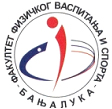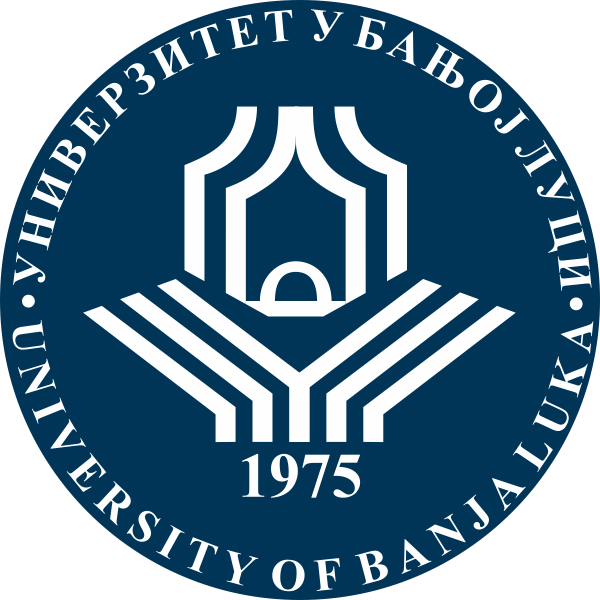SportLogia
Vol. 10, Issue 1, June 2014.
RELATIONSHIP BETWEEN MORPHOLOGICAL PARAMETERS
AND THROWING VELOCITY, MAXIMAL FORCE AND SWIMMING
SPEED IN ELITE MALE WATER POLO PLAYERS
Kemal Idrizović1,2,Julio Calleja-Gonzáles2,3,and Dean Kontić4,5
1Faculty for Sport and Physical Education, University of Montenegro,
Podgorica, Montenegro
2Center for Health, Exercise and Sport Sciences, Belgrade, Serbia
3Faculty of Sport Sciences, University of the Basque Country, Vitorija-Gasteiz, Spain
4University of Dubrovnik, Dubrovnik, Croatia
5Australian National Water Polo Team
Original SCIENTIFIC PAPER
doi: 10.5550/sgia.141001.en.002I
UDC: 797.253.012.1
Summary
Technical, tactical and physiological demands of water polo players that once were standard are no
longer current. The advancement in the total approach to this discipline, from players’, coaches’ and
also from the scientific standpoint, have led to the establishing of new physiological principles that
are now actual in this team sport. The relationship of morphological characteristics and specific motor abilities represents one of the important traits of a player profile in elite water polo. The main aim
of this study was to examine and define the relationships among the anthropometrical characteristics
(body height, arm span, leg length, body mass and BMI) and three sport-specific fitness tests, 20-meters-sprint-swimming, maximal dynamometric force in eggbeater kick and throwing velocity. The
sample of participants embraced 22 (23.04 ± 2.72 years) top-quality water polo players, members of
the national team and one water polo club, who participated in the Adriatic League competition. Throwing velocity shows a significative correlation only with maximal dynamometric force in eggbeater kick (r=.455, p=.033). Maximal dynamometric force in eggbeater kick, except with throwing
velocity shows significative correlation with body mass (r=.745, p=.000), body height (r=.568, p=.006),
BMI (r=.521, p=.013) and with arm span (r=.488, p=.021). Regarding to swimming speed, significant
correlations were not found. One of the major finding of the present research was that swimming
speed has no statistically significant linear correlation with any of applied morphological and specific
motor parameters. A second major result was that throwing velocities significantly correlate only with
maximal dynamometric force in eggbeater kick. On the other side, no statistically significant correlation has been found between a throwing velocity and the applied anthropometric parameters that
almost completely determined a result in the test for the estimation of a maximal dynamometric force
in eggbeater kick.
Key words: anthropometry, correlation, specific fitness.
References
Alcaraz, P. E., Abraldes, J. A., Ferragut, C.,
Rodríguez, N., Argudo F. M., & Vila, H. (2011).
Throwing velocities, anthropometric
characteristics, and efficacy indices of women's
European water polo subchampions. Journal of
Strength and Conditioning Research, 25(11), 3051–3058. doi: 10.1519/JSC.0b013e318212e20f ![]()
Alcaraz, P. E., Abraldes, J. A., Ferragut, C., Vila, H.,
Rodríguez, N., & Argudo F. M. (2012).
Relationship Between Characteristics of Water
Polo Players and Efficacy Indices. Journal of
Strength and Conditioning Research, 26(7), 1852–1857. doi: 10.1519/JSC.0b013e318237ea4f ![]()
Anderson, M., Hopkins, W., Roberts, A., & Pyne,D. (2008). Ability of test measures to predict
competitive performance in elite swimmers.
Journal of Sports Science, 26(2), 123–130. doi: 10.1080/02640410701348669 ![]()
Barry, B., & Maria, I. V. (2010). Leg length, body
proportion, and health: A review with a note on
beauty. International Journal of Environmental
Research and Public Health, 7(3), 1047–1075. doi: 10.3390/ijerph7031047 ![]()
Bloomfield, J., Blanksby, B. A., Ackland, T. R.,& Allison, G. T. (1990). The influence of strength
training on overhead throwing velocity of elite
water polo players. Australian Journal of Sience and
Medicine in Sport, 22(3), 63–67.
Cazorla, G., & Montpetit, R. R. (1988). Metabolic
and Cardiac Responses of Swimmers, Modern
Pentathletes, and Water Polo Players During
Freestyle Swimming to a Maximum. In B.
Ungerechts, and K. Wilke Reischle (Eds.),
Swimming Science V. International Series on Sport
Sciences(pp. 251–257). Champaign, IL: Human
Kinetics.
Dopsaj, M., Matković, I., & Zdravković, I. (2000).
The relationship between 50m-freestyle results
and characteristics of tethered forces in male sprint swimmers: a new approach to tethered
swimming test. Facta Universitatis, 1(7), 15–22.
Ferragut, C., Abraldes, J. A., Vila, H., Rodríguez, N.,
Argudo F. M., & Fernandes, R. J. (2011a).
Anthropometry and throwing velocity in elite
water polo by specific playing position. Journal of
Human Kinetics, 27(1), 31–44.
Ferragut, C., Vila, H., Abraldes, J. A., Argudo F. M.,
Rodríguez, N., & Alcaraz, P. E. (2011b).
Relationship among maximal grip, throwing
velocity and anthropometric parameters in elite
water polo players. The Journal of Sports Medicine
and Physical Fitness, 51(1), 26–32.
Fernandez, J. R., & Vilas-Boas J. P. (2012). Time to
exhaustion at the VO2 max velocity in
swimming: A review. Journal of Human Kinetics,
32, 121–134.
Goon, D. T., Toriola A. L., Musa, D. I. & Akusu, S.
(2011). The relationship between arm span
measurement and stature in Nigerian adults.
Kinesiology, 43(1), 38–43.
Homma, M. (2000). Load above the water surface
during the movements in synchronized
swimming. Bulletin of sports methodology, 16, 13–22.
Idrizović, K., Milošević, D., & Pavlović, R. (2013).
Physiological diferencess between top elite and
elite waterpolo players. Sport Science, 6(2), 59–65.
Idrizović, K., Uljević, O., Ban, Đ., Spasić, M.& Rausavljević, N. (2013). Sport-specific and
anthropometric factors of quality in junior male
water polo players. Collegium Antropologicum,
37(4), 1261–1266.
Joris H. J. J., Muijen Van, E., Ingen Schernau Van,
G. J., & Kemper, H. C. G. (1985). Force, velocity
and energy flow during the overarm throw in
female handball players. J. Biom, 18, 409–414.
doi: 10.1016/0021-9290(85)90275-1 ![]()
Knechtle, B., Baumann, B., Knechtle, P.,& Rosemann, T. (2011). What influences race
performance in male open-water ultraendurance swimmers: Anthropometry or
training? Human Movement, 11(1), 5–10.
Kondrič, M., Uljević, O., Gabrilo, G., Kontić, D.,& Sekulić, D. (2012). General anthropometric and
specific physical fitness profile of high-level
junior water polo players. Journal of Human
Kinetics, 32, 157–165.
doi: 10.2478/v10078-012-0032-6 ![]()
Lozovina, V., & Pavičić, L. (2005). Anthropometric
changes in elite male water polo players: Survey
in 1980 and 1995. Croatian Medical Journal, 45,
202–205.
Lozovina, M., Durović, N., & Katić, R. (2009).
Position specific morphological characteristics
of elite water polo players. Collegium
Antropologicum, 33(3), 781–789.
Lozovina, M., Lozovina, V., & Pavičić, L. (2012).
Morphological changes in elite male water polo
players: Survey in 1980 and 2008. Acta
Kinesiologica, 6(2), 85–90.
Lupo, C., Tessitore, A., Minganti, C., & Capranica,
L. (2010). Notational analysis of elite and subelite water polo matches. Journal of Strength and
Conditioning Research, 24(1), 223–229.
doi: 10.1519/JSC.0b013e3181c27d36 ![]()
Marfell-Jones, M., Olds, T., Stew, A., & Carter, L.
(2006). International standards for anthropometric
assessment. Potchefstroom, South Africa: The
International Society for the Advancement of
Kinanthropometry (ISAK).
Meckel, Y., Bishop, D., Rabinovich, M., Kaufman,
L., Nemet, D., & Eliakim A. (2013). Repeated
Sprint Ability in Elite Water Polo Players and
Swimmers and its Relationship to Aerobic and
Anaerobic Performance. Journal of Sports Science
and Medicine, 12(4),738–743.
Melchiorri, G, Castagna, C, Sorge R, & Bonifazi, M.(2010). Game activity and blood lactate in men’s
elite water-polo players. Journal of Strength and
Conditioning Research, 24(10), 2647–2651.
doi: 10.1519/JSC.0b013e3181e3486b ![]()
Milanović, D., & Vuleta, D. (2013). Association
between morphological dimensions of water
polo players and play performance indicators.
Sport Mont, 11(37, 38, 39), 447–453.
Reeves, S. L., Varakamin, C., & Henry, C. J. (1996).
The relationship between arm-span
measurements and height with special reference
to gender and ethnicity. European Journal of
Clinical Nutrition, 50(6), 398–400.
Sanders, R. H. (1998). Lifting performance in
aquatic sports. In H. J. Riehle and M. M. Vieten
(Eds), Proceedings book of XVI International
Symposium on Biomechanics in Sports(pp. 25–39).
Germany: University of Konstanz.
Sanders, R. H. (1999). Analysis of the eggbeater
kick used to maintain height in water polo.
Journal of Applied Biomechanics, 15, 284–291.
Siders, W. A., Lukaski, H. C., & Bolonchuk, W. W.
(1993). Relationships among swimming
performance, body composition and
somatotype in competitive collegiate swimmers.
Journal of Sports Medicine and Physical Fitness, 33(2),
166–171.
Smith, H. K. (1998). Applied physiology of water
polo. Sports Medicine, 26(5), 317–334.
doi: 10.2165/00007256-199826050-00003 ![]()
Snyder, P. (2008). Water polo for Players & Techers of
Aquatics.Los Angeles, CA: Los Angeles
Olympic Foundation.
Steele, M. F., & Chenier, T. C. (1990). Arm-span,
height and age in black and white women.
Annals of Human Biology, 17(6), 533–541. doi: 10.1080/03014469000001312 ![]()
Goon, D. T., Toriola, A. L., Musa, D. I., & Akusu,
S. (2011). The relationship between arm span
measurement and stature in Nigerian adults.
Kinesiology, 43(1), 38–43.
Tsekouras, Y. E., Kavouras, S. A., Campagna, A.,
Kotsis, Y. P., Syntosi, S. S., Papazoglou, K.,& Sidossis, L. S. (2005). The anthropometrical and
physiological characteristics of elite water polo
players. European Journal of Applied Physiology,
95(1), 35–41. doi: 10.1007/s00421-005-1388-2 ![]()
Van der Wende, K. (2005). The effects of game-specific
task constraints on the outcome of the water polo shot.
Auckland, New Zealand: Auckland University
of Technology.
Vila, H., Ferragut, C., Argudo, F. M., Abraldes, J. A.,
Rodrígues, M., & Alacid, F. (2009). Relationship
between anthropometric parameters and
throwing velocity in water polo players. Journal
of Human Sport and Exercise, 4(1), 57–68. doi: 10.4100/jhse.2009.41.07 ![]()
Zampagni, M. L., Casino, D., Benelli, P., Visani, A.,
Marcacci, M., & De Vito, G. (2008).
Anthropometric and strength variables to
predict freestyle performance times in elite
master swimmers. Journal of Strength Conditioning
Research, 22(4), 1298–1307. doi: 10.1519/JSC.0b013e31816a597b ![]()
World Medical Association Declaration of Helsinki.
(2103). Ethical principles for medical research involving
human subjects. Retrieved from http://jama.jamanetwork.com/ on 10/22/2013.




